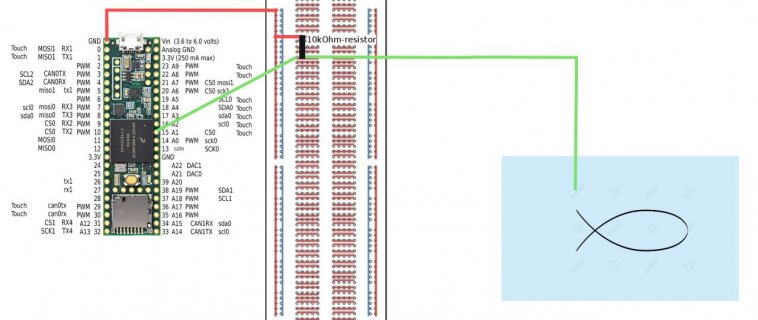Hello you lovely people!
I want to measure the EOD's of weak electric fish. The pulses they send out have a duration of about 1ms and are weak(mV range).
For this project i need a sample rate of at least 100kHz with a resolution of at least 12bit. I spent the last week to gather information
and now i'm at a point where i don't know how i should proceed or if i have the right direction. My plan is to take a teensy 3.5/3.6
and save the measurements directly(10min) on a SD card. I dont have problems with the code but rather with the hardware. I tried to accomplish
the plan with an Arduino Mega 2560 and an external 16bit ADC(ADS1115) but realized that i cant even scratch the sample rate of 100ksps.
Questions:
-can i accomplish this project with a teensy ?
-can i accomplish this with an external ADC if so do you have any tipps wich to use ?
for this i thought about something like http://www.ti.com/product/ads8331 ... do i only need to solder them on a pcb and i'm ready to go ?
I'm completly new in this field so i'm greatful for every advice in advance!
Best regards!
I want to measure the EOD's of weak electric fish. The pulses they send out have a duration of about 1ms and are weak(mV range).
For this project i need a sample rate of at least 100kHz with a resolution of at least 12bit. I spent the last week to gather information
and now i'm at a point where i don't know how i should proceed or if i have the right direction. My plan is to take a teensy 3.5/3.6
and save the measurements directly(10min) on a SD card. I dont have problems with the code but rather with the hardware. I tried to accomplish
the plan with an Arduino Mega 2560 and an external 16bit ADC(ADS1115) but realized that i cant even scratch the sample rate of 100ksps.
Questions:
-can i accomplish this project with a teensy ?
-can i accomplish this with an external ADC if so do you have any tipps wich to use ?
for this i thought about something like http://www.ti.com/product/ads8331 ... do i only need to solder them on a pcb and i'm ready to go ?
I'm completly new in this field so i'm greatful for every advice in advance!
Best regards!


